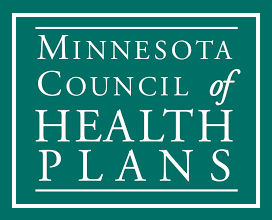Reinsurance still makes sense
Despite the year-to-year unpredictability we’re seeing, the overall trend is clear: health care is more expensive than Minnesotans can afford, and we have to do everything we can to shield individual families from sudden, unexpected expenses.
That’s why the state’s Premium Security Program, also called reinsurance, is still important for 2020. State reinsurance isn’t a long-term solution. But right now, it’s the best chance we have to keep premiums down for 2020, and we know for a fact that it works. In 2019, Minnesota’s health insurance premiums are the lowest in the nation, and that’s thanks to reinsurance.
It’s a proven success.
“The reinsurance program reduced premiums for 2018 by about 20 percent on average…and about 20 percent again on average for 2019,” according to the Department of Commerce.
It’s a national model.
Minnesota was the first state in the nation to use this type of reinsurance to keep premiums stable for people who buy health insurance on their own. Other states have followed.
No new money is needed.
The legislature appropriated $271 million in state funds per year to pay for reinsurance 2018 and 2019. Knowing that just $138.9 million was spent in 2018 should relieve policymakers’ concerns about how to fund the help in 2020.
It already has federal approval.
We only need the legislature and Governor Walz agree to continue the Premium Security Program; the federal government has already approved the program through 2022.
It brings federal money to Minnesota.
The federal government contributed $131 million to the program for 2018 and an estimated $84 million in 2019. That means actual state expenses for the 2018 medical bills were about $7.9 million, not the $271 million budgeted.
2020 federal changes already push premiums up.
The combination of the return of federal health insurance tax and no requirement for people to have insurance already means premiums will likely go up.
Does funding for reinsurance come from MinnesotaCare?
No. MinnesotaCare is funded from the Basic Health Plan (BHP) trust fund. It has enough money to continue funding MinnesotaCare at current levels.
Did reinsurance cause Minnesota to lose federal money?
Not overall. The federal government reduced Minnesota’s BHP funding by about $90 million per year. That federal money is now being used to help lower premiums for Minnesotans who buy health insurance on their own.
Will Minnesota taxpayers have to pay more to extend reinsurance?
No new funding is needed. There is enough money left over in the Minnesota Premium Security Plan — a projected $593 million at the end of 2019 — to keep the program running without any additional funds. All the legislature needs to do is agree to use the money they’ve already appropriated for the purpose. Now new funding is needed.
Does reinsurance do anything to lower the price of care?
No. That’s the bigger problem we are all grappling with — health care keeps getting more expensive every year, in Minnesota just like the rest of the country. But reinsurance does help protect Minnesotans who buy health insurance on their own from even higher premiums.
Is reinsurance a handout to insurance companies?
No. Reinsurance is a way to reduce premiums for Minnesotans who buy health insurance on their own. It works by having the state’s reinsurance fund pay some medical bills. If the state wasn’t paying those bills, they’d have to be added to the premiums people pay each month.
I buy my own insurance. Why didn't it go down 20 percent?
The first step in setting premiums with reinsurance was to reduce the rates by 20 percent. Then rates were adjusted for other factors, such as people being a year older, and rising medical and drug prices. While about 155,000 Minnesotans in every county in the state got help from reinsurance, not everyone’s premiums went down 20 percent.
